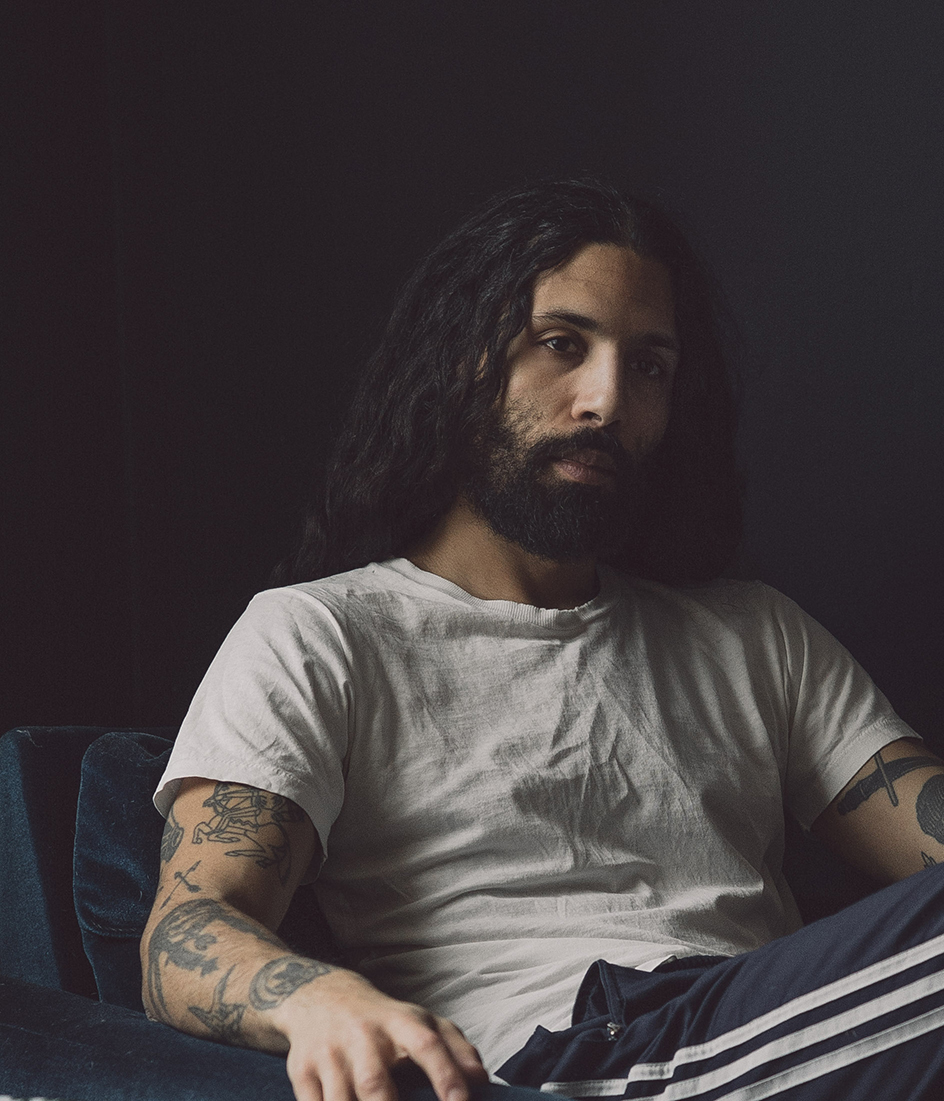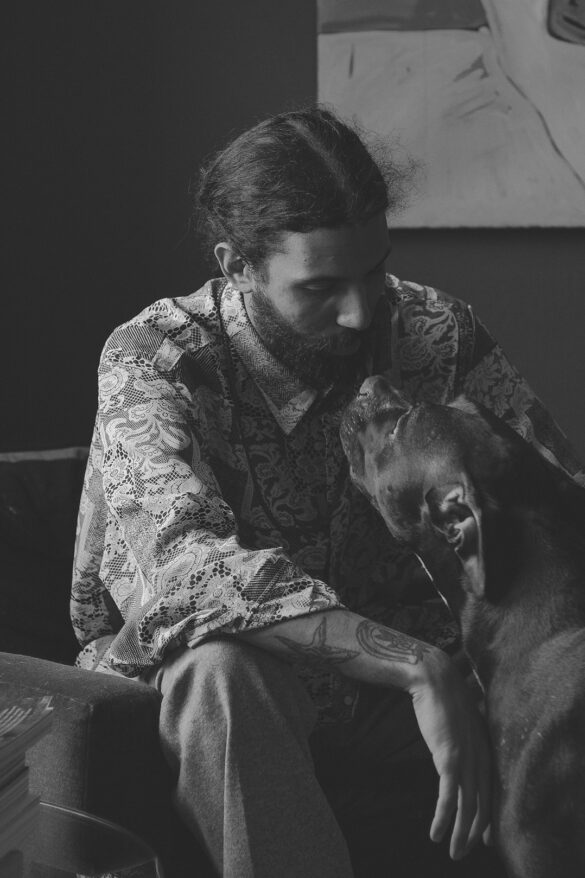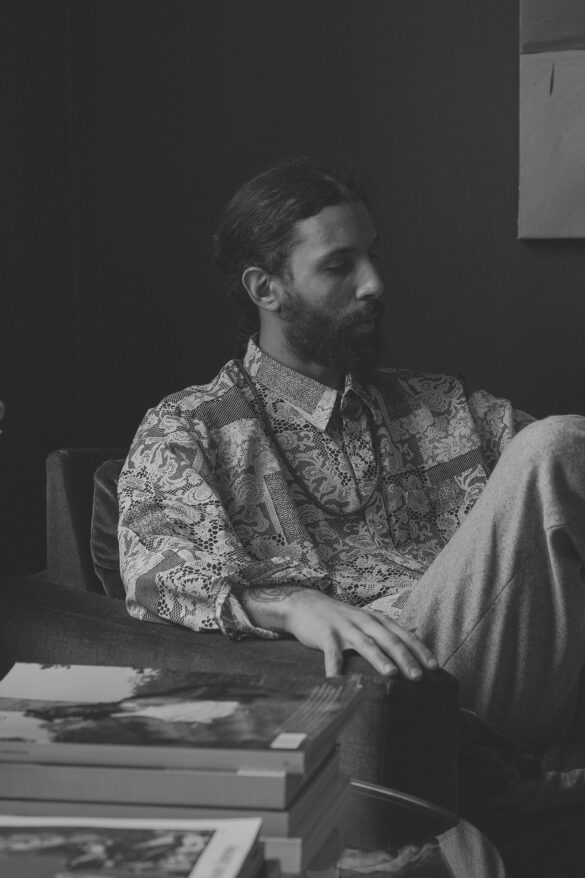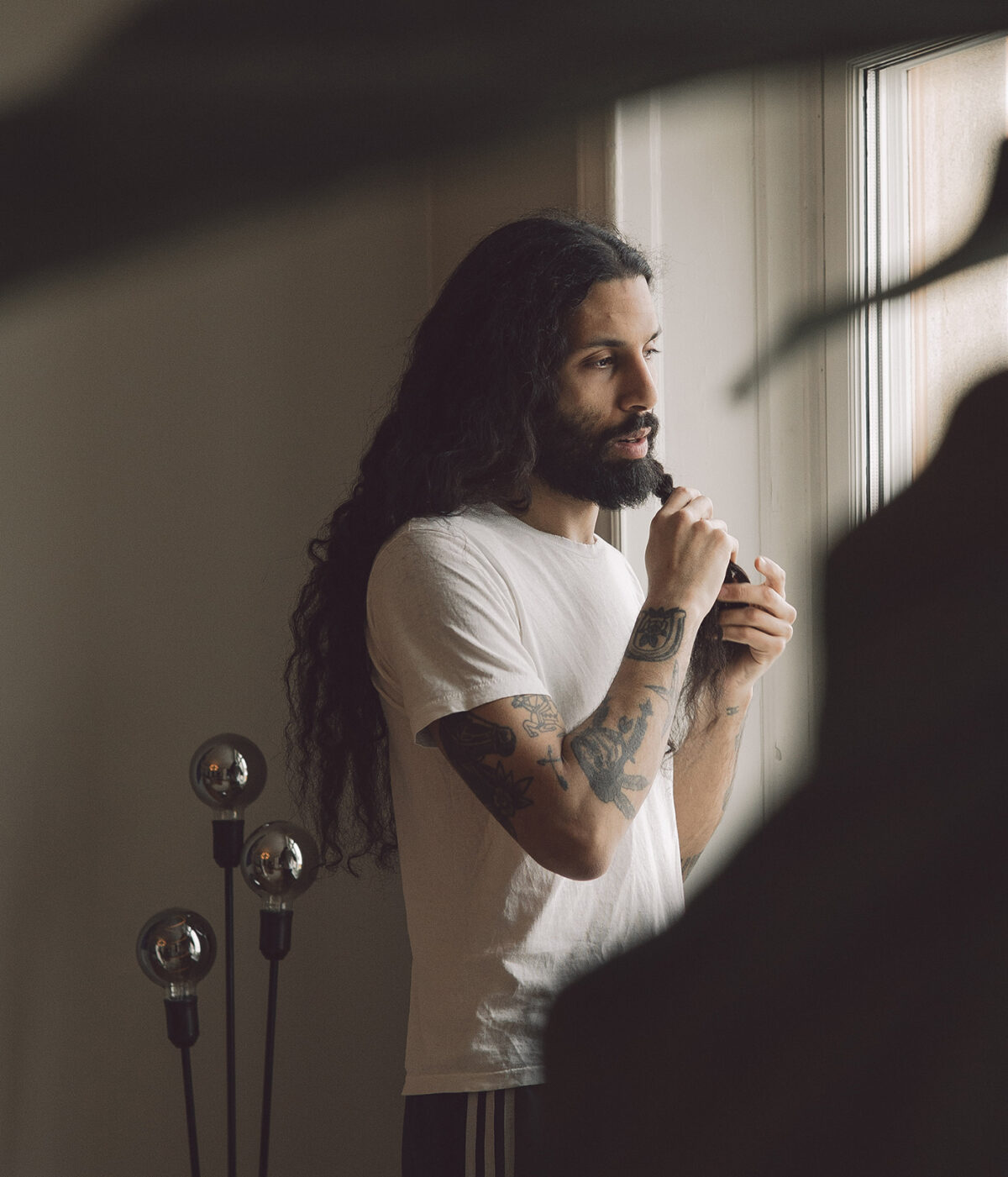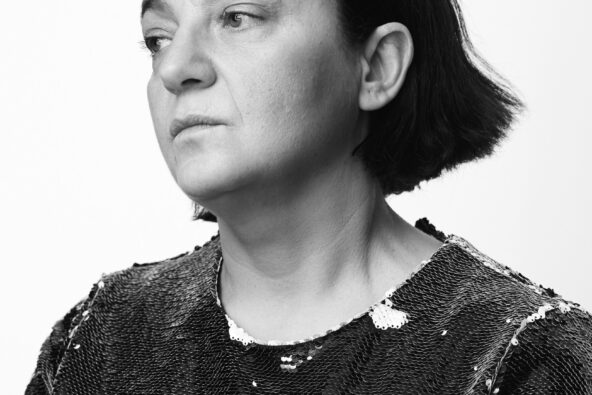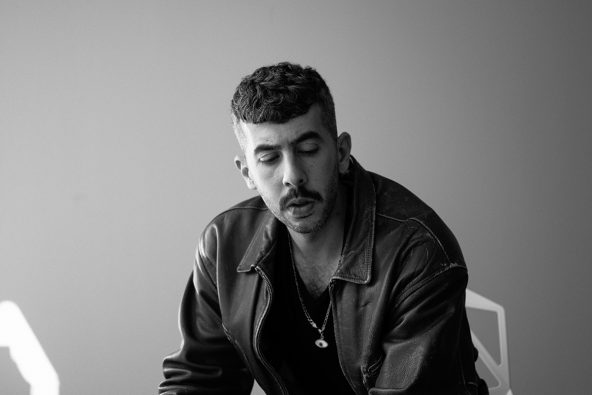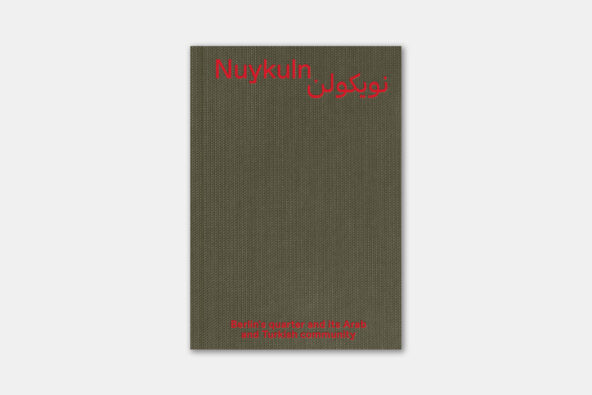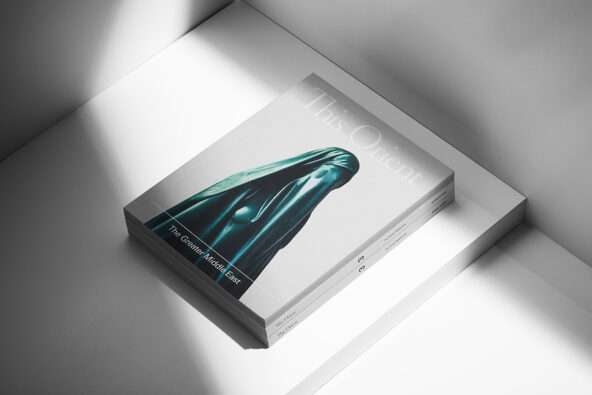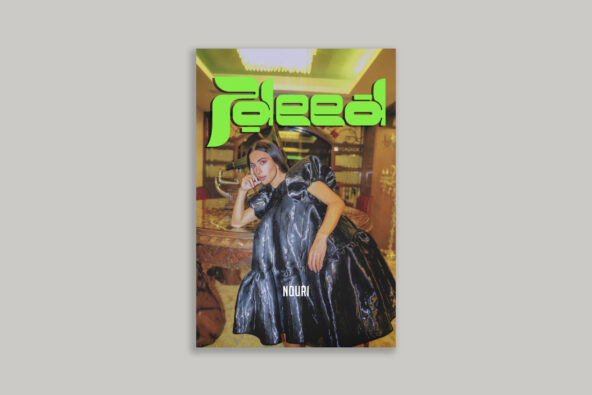Moley Talhaoui
Marouane Ben Belfort: What kind of personal emotions go through your mind while painting?
Moley Talhaoui: Let’s go back a bit. During an early stage of my artistic work, I studied the Canadian doctor Gabor Maté, who is known for his studies regarding recuperation and the therapy of addicts. He said something like, if a child is born in an environment that is unsafe and without security and without a parenting figure, a common consequence is that one finds a thing or an activity that one can take refuge in.
My comfort zone was art, it was an escape for me. A place, a state where I feel safe and comfortable. My art expresses my character in its entirety. Painting is the only place where I can totally draw on and be myself. I do not ignore my surroundings, but in the act of painting, I can be free of my surroundings.
So, during the act of painting there is no specific feeling or emotion like happiness or anxiety. It is more a state of mind you have, driven by various stimuli, which emotions are just one part of.
Exactly. I do not try to manifest the emotions I have into my painting. If I compare it to musicians, producers, or other creatives, they have limits. They work in a team, working over and over again to get the fullest and best version of something. They analyse, repeat, and record something until it has reached the perfect state. As a painter I try to produce and then analyse – or, better yet, let us say ‘look back’ at the work. If I think too much about my work in the process of making it, I start thinking ‘that works, that doesn’t work’, and I think that the concept of ‘working’ does not really fit with art.
But what I have are periods when I paint. These periods tend to have a theme, like black and white, coloured, or nudes.
Would you explain your art?
I try not to put too many words onto my artworks. I try to avoid over-intellectualizing it. Everything in life is already described, or people are trying to explain it. When I look at my paintings after I have finished them, I have totally forgotten what I thought while I was painting them. Every time I look at them, I see something new.
Have you ever been afraid to look back at your art? In the sense of what you drew and what it could mean to you?
No, I would not say so. But I am afraid of feeling too comfortable. I always want to feel insecure when I start to paint.
‘Every time I walk into friends’ homes — no matter if they are Arabians, Turks, Iraqis, or Iranians — I feel welcomed and at home.’
Isn’t it weird that people are always trying to put someone in a box? This kind of stereotyped thinking. You can be both. It doesn’t have to be questionable at all.
Every time I walk into friends’ homes — no matter if they are Arabians, Turks, Iraqis, or Iranians — I feel welcomed and at home. I know the culture and the importance of certain things without even thinking about it. But if I visited the home of people from Gambia or the Congo I would feel the same way. I have not manifested my behaviour, my self into a certain direction or way. If people see me as Swedish or African, either is fine for me, so long as they accept me for who I am and are open minded.
Do you ever visit Morocco?
Yes, I do. The last time I was there was about three years ago, and I would like to travel there this year as well. Unfortunately, my grandmother passed away this year, and I always connected this country to my grandmother. She became the symbol of my roots. She was also the reason for me to explore more of the culture, to visit the cities and villages.
Find the whole article inside Vol.3 of This Orient “The Greater Middle East”. Find the issue here in our store.
